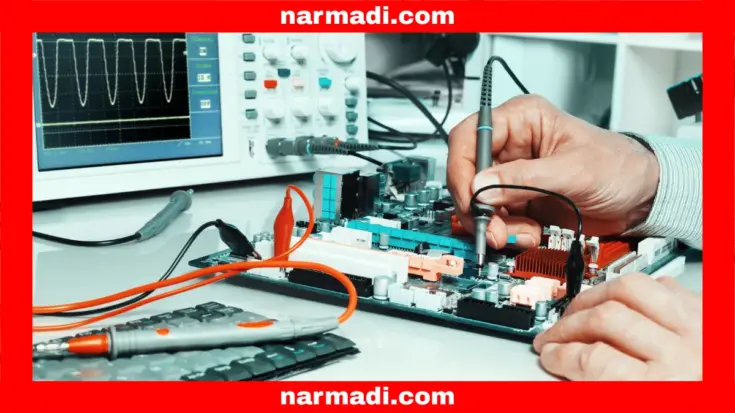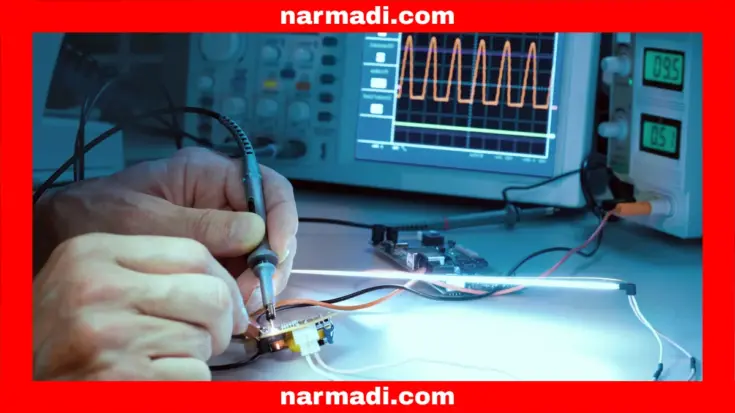Currently, Information and Communication Technology (ICT) products are widely used by the public. In addition to Radio Frequency (RF) Testing, Specific Absorption Rate (SAR) Testing is also important in ensuring that the products we use meet established standards.
Specific Absorption Rate testing is conducted to ensure that electronic devices meet safety and security standards for their users. Each country has its own regulations to ensure that ICT products on the market meet standards, avoid risks, and comply with applicable regulations.
Let’s take a closer look at what Specific Absorption Rate testing is, so we can understand how important this test is for ICT products.
Also Read
Table of Contents
What is the Specific Absorption Rate Test?

Specific Absorption Rate testing is an important assessment that measures the amount of electromagnetic radiation absorbed by the human body when exposed to wireless communication devices, such as smartphones, tablets, wearable devices, and other wireless technologies. Its purpose is to ensure that devices do not exceed permissible exposure limits.
SAR testing provides a quantitative measure of the rate of electromagnetic energy absorption. The test is conducted by placing the device near a human body model containing simulated tissue fluid and measuring the rate of energy absorption. This role is crucial in ensuring the safety of electronic devices with respect to human health.
The following are some examples of key items that require SAR testing:
- Mobile phones
- Tablets
- Laptops
- Wearable devices
- Cordless phones
- Baby monitors
- Medical devices
- Wireless gaming devices
- Bluetooth headsets and headphones
- Industrial equipment
How is the Specific Absorption Rate Test Process?
SAR regulations are officially applied to telecommunications equipment based on the Decree of the Minister of Information and Digital Affairs (KOMDIGI) No. 177 of 2024. This process usually includes:
- System check: Check the system before starting testing
- Transmitted power measurement: Measure the power transmitted through the device
- Device placement: Place the device in various positions near the head or body
- Measurement: Use a probe to measure RF energy at specific locations on the body
- Data analysis: Use a computer to analyze the data and record the maximum SAR value
Scope of Specific Absorption Rate Testing

Specific Absorption Rate testing is conducted in this case to comply with IEC (International Electrotechnical Commission) standards. The following are some of the parameters tested in SAR testing:
Head SAR
- Exposure when the device is used near the head (e.g., when making a phone call).
- It is important to ensure the safety of the brain and surrounding tissues.
Torso SAR
- Exposure when the device is carried in a jacket pocket, bag, or near the body.
- Keeps vital organs such as the heart safe.
Limb SAR
- Exposure when the device is held in the hand or placed in a pants pocket.
- Prevents excessive exposure to muscle and bone tissue.
SAR Testing Method Standards
- Head SAR: IEC/IEEE 62209-1528 or EN 50360:2017; KDB 941225 D01; KDB 941225 D05; KDB 941225 D05A; and/or 447498 D01 or equivalent (IEC 62209-1).
- Torso and Limbs SAR: IEC/IEEE 62209-1528 or EN 50566:2017; KDB 941225 D01; KDB 941225 D05; KDB 941225 D05A; and/or 447498 D01 or equivalent (IEC 62209-2)
Why is the Specific Absorption Rate Test Important?

Specific Absorption Rate testing is more than just a technical procedure that must be fulfilled. It is a major responsibility for manufacturers to ensure that the products they sell do not pose a health risk to users.
Devices that have passed the SAR test demonstrate that:
- They have been tested by an accredited laboratory
- They meet the established safety thresholds
- They meet regulatory requirements
- There is no potential health risk
- They are safe for use in everyday activities
SAR Testing vs RF Testing vs EMC Testing
SAR, RF, and EMC tests are interrelated types of testing that ensure ICT devices function safely and correctly. So what is the difference? SAR testing focuses on measuring the level of radio frequency radiation absorbed by the human body. The goal is to ensure that radio frequency exposure from devices is safe for human health.
RF testing focuses on functional performance, such as signal transmission and reception at specified frequencies. The goal is to ensure that radio transmitters and receivers function as intended.
Meanwhile, EMC testing focuses on interference between devices. This test ensures that devices do not interfere with other devices and can withstand interference from other devices. The goal is to measure a device’s ability to operate in an electromagnetic environment without causing interference and without being affected by interference.
Want to Pass The Specific Absorption Rate Test?
Passing Specific Absorption Rate testing is a mandatory step for manufacturers or importers of electronic devices before marketing their products. Therefore, you need to know how to pass this test.
One of the best solutions to comply with this regulation is to use a Product Compliance Specialist Service. This service will help you get through the testing process quickly, in accordance with the regulations in each country, and ensure that your devices meet safety standards. This prevents the risk of your devices being withdrawn from the market due to non-compliance with regulations.
















